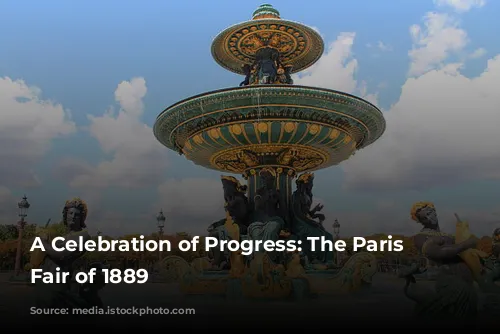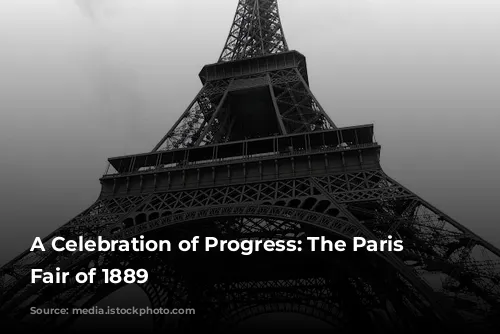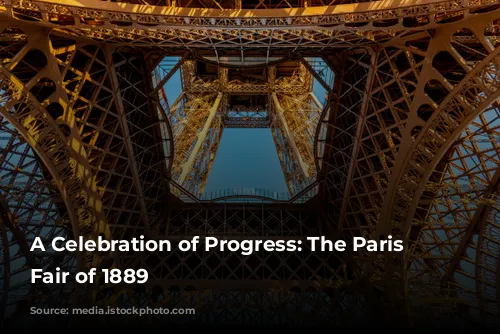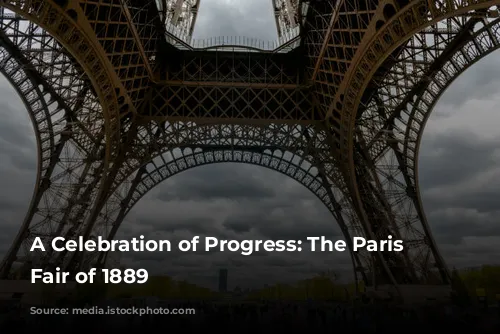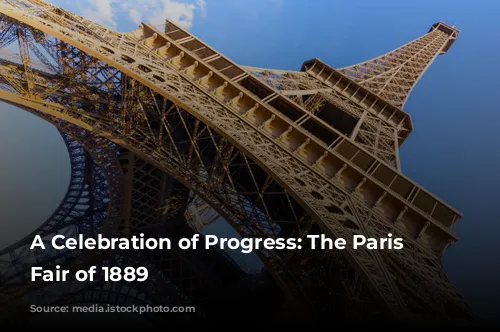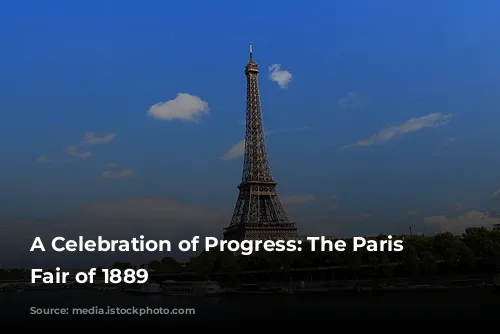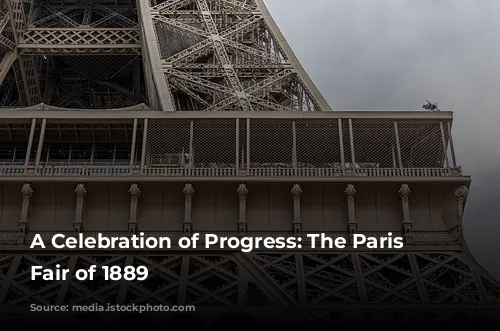The Paris World’s Fair of 1889 wasn’t just an exhibition; it was a grand celebration marking the 100th anniversary of the French Revolution. This event, overseen by the esteemed Jean-Charles Alphand, a renowned engineer in Paris and a close associate of Baron Haussmann, was a captivating display of France’s advancements.
The Esplanade des Invalides buzzed with displays of France’s colonial might and military prowess, while the Champs de Mars and the Palais du Trocadéro became vibrant showcases for art, industry, and technological innovation.
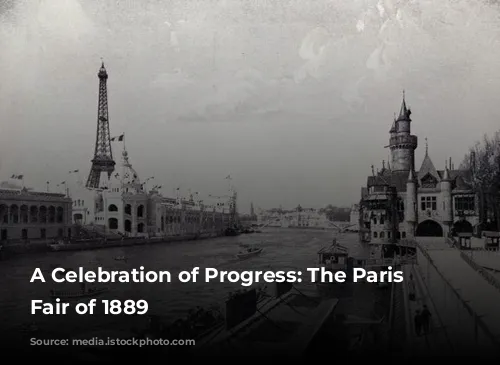
A Nation Rebuilt
The fair was a powerful symbol of France’s resilience. After enduring the devastating defeat in the Franco-Prussian war, the tumultuous Paris Commune, and a crippling economic crisis, France had emerged stronger than ever. Its vast colonial empire, booming industry, and renewed standing among European powers were proudly displayed.
The exhibition’s republican nature, however, was not universally appreciated. Most of the European monarchies chose not to participate, making the fair a platform for showcasing achievements from other continents. A fascinating “architectural tour of the world” was presented, including recreations of ancient civilizations and dwellings, from troglodyte caves to neolithic lake cities.
Perhaps the most heartwarming innovation was a special Pavilion for Children, echoing the groundbreaking Women’s Pavilion at the Philadelphia World’s Fair of 1876. This space was designed to entertain and engage young visitors, ensuring that the fair was truly an event for all ages.
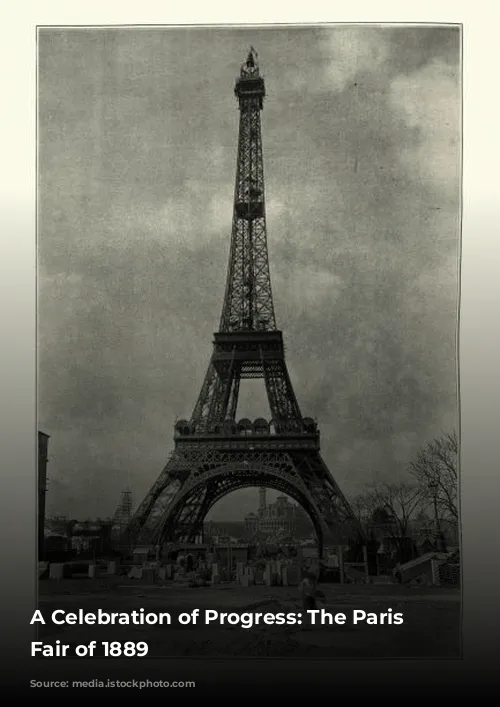
A Symphony of Metal and Glass
The 1889 World’s Fair is best known for its architectural marvels, particularly its innovative use of metal and glass. The Palais des Machines, designed by the architects Dutert and Contamine, was a stunning testament to these materials. This colossal structure featured a single vault and a nave spanning an impressive 77,000 square meters, with 35,000 square meters of glass sourced from the renowned Saint-Gobain company.
The author Joris-Karl Huysmans captured the awe-inspiring scale of the building, describing it as “an exorbitant lancet arch that joins under the infinite sky of the windows its prestigious points.” The Palais des Machines was a haven for industrial displays, showcasing marvels like Dayex’s voting machines, powerful atmospheric hammers, cigarette-making machines, and the intricate clockmaking workshop of Tissot.
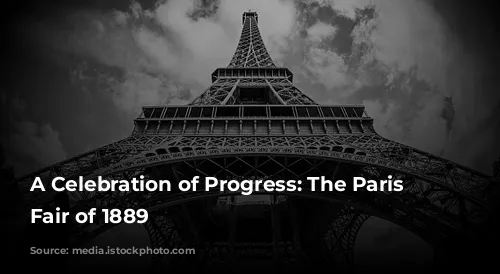
The Eiffel Tower: A Monument to Progress
But the undisputed star of the fair was the iconic Eiffel Tower, designed by the visionary engineer Gustave Eiffel. This 324-meter-tall structure was the tallest monument in the world at the time, a symbol of human ambition and engineering prowess. Despite its initial detractors, who signed a petition protesting its “useless and monstrous” presence in the heart of Paris, the tower quickly became a beloved landmark.
Every night, the tower was illuminated by gas burners, creating a spectacular sight against the Parisian sky. Nearly 2 million visitors, an average of 12,000 per day, ascended the tower during the fair, eager to experience the unparalleled panoramic view of Paris, a breathtaking spectacle that was unprecedented in an era before aerial photography.
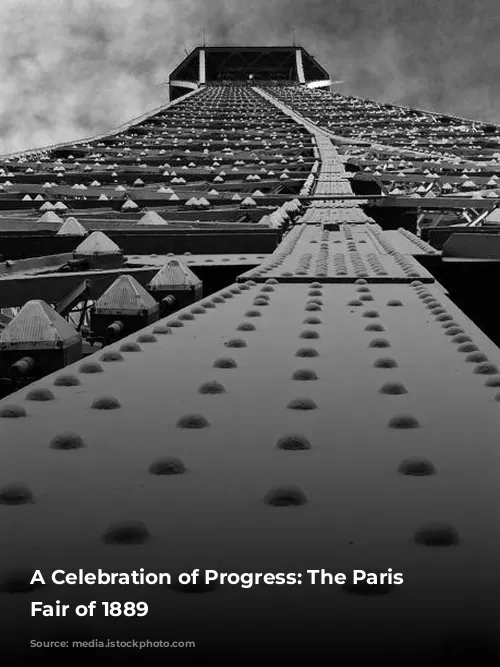
Beyond the Tower: A World of Innovations
But the 1889 World’s Fair offered much more than just architectural wonders. The Decauville railway, a 3-kilometer-long track connecting the Champs de Mars and the Invalides, showcased the transformative power of railway technology, a symbol of the progress made during the 19th century.
The event also boasted the “largest known electric lighting installation,” a triumph of engineering thanks to the ingenuity of Hippolyte Fontaine. This innovation allowed the fair to extend its opening hours until midnight, offering visitors an unforgettable nighttime experience. The mesmerizing Luminous Fountain designed by Coutan further enhanced the evening spectacle, its colors changing in harmony with the music played by the accompanying band.
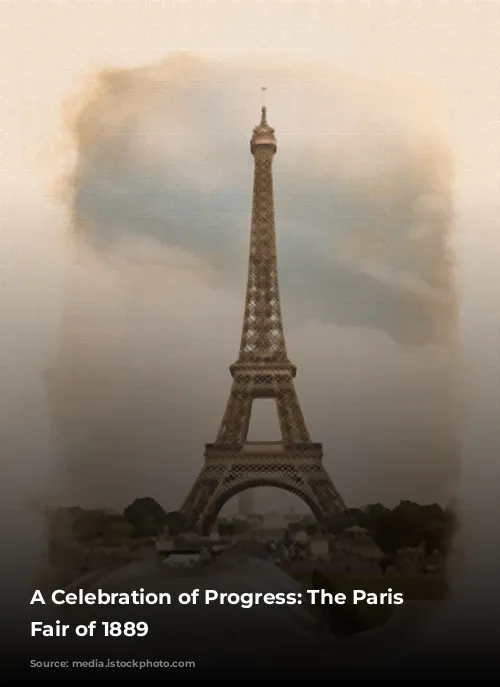
A Showcase of Artistic Excellence
The fair wasn’t just about industry and technology; it also celebrated the finest achievements of decorative arts. Several pavilions were dedicated to showcasing the work of renowned national manufactures. Sèvres, under the artistic direction of Carrier-Belleuse, displayed a collection of innovative models that revolutionized the factory’s style.
The Goldsmith’s Gallery presented exquisite creations by the renowned sculptors Mercié, Coutan, and Delaplanche. The Art Bronzes Gallery drew attention to Rindel d’Illzach’s monumental vase, a stunning embodiment of the emerging Symbolism movement.
The Furniture Gallery showcased the enduring allure of the Louis XV and Renaissance styles. A cabinet designed by Paul Sédille, carved by Allar, and adorned with enamels based on the designs of the symbolist artist Olivier Merson, won a gold medal, a testament to the harmonious blend of craftsmanship and artistic vision.
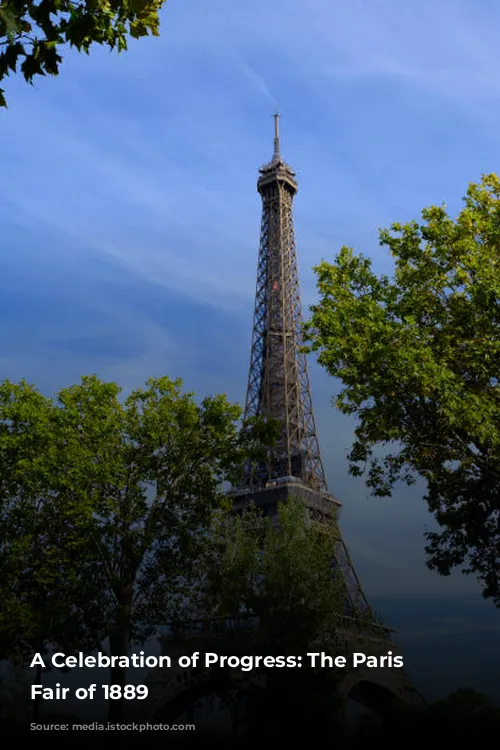
A Dawn of New Styles
The 1889 World’s Fair marked a turning point in artistic history. The School of Nancy, the leading force of Art Nouveau in France, saw several of its members honored for their innovative work. Among them were Emile Gallé, Emile Friant, and Victor Prouvé, whose contributions foreshadowed the bold, organic, and aesthetically groundbreaking spirit of the Art Nouveau movement.
The Paris World’s Fair of 1889 wasn’t simply a display of technological advancements; it was a celebration of France’s rebirth, a testament to its ingenuity and resilience. It showcased the transformative power of industry, architecture, and art, leaving a lasting legacy on the landscape of Paris and the world.
